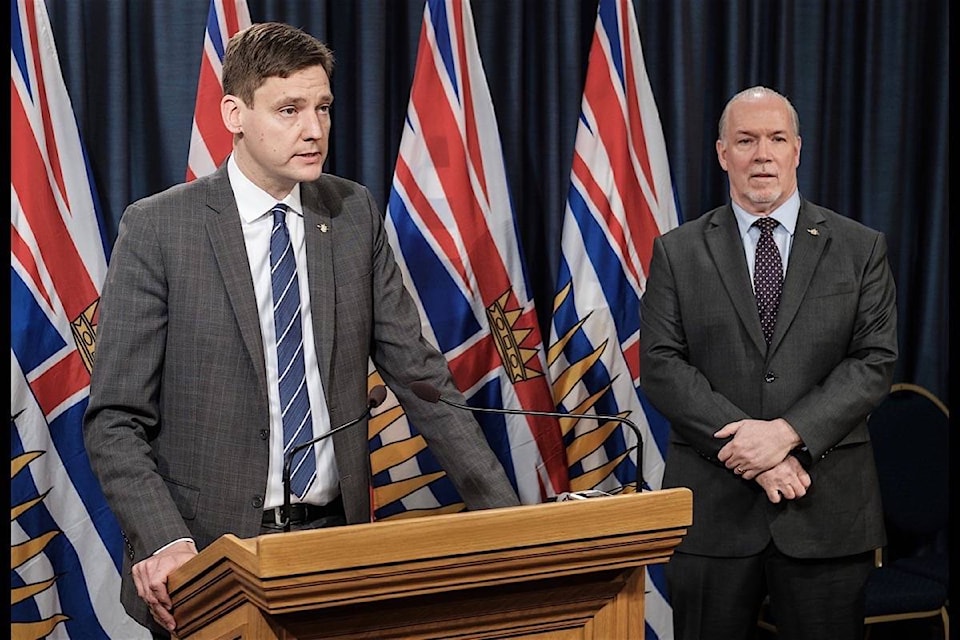Expect more political parties, some driven by single issues, more coalition governments and more waiting for final election results if B.C. voters opt to change to a proportional representation system this fall.
Those are the main findings of an international survey of 30 countries, comparing how B.C.’s current voting system stacks up with options being offered in a mail-in referendum set for this fall.
Jurisdictions like B.C. that use first-past-the-post (FPTP) voting systems elect an average of 2.5 parties each election, compared to 4.6 parties on average with proportional representation (PR) voting systems, the Fraser Institute reported Thursday after reviewing election data from 30 countries between 2000 and 2017.
Coalition governments happen 87 per cent of the time in PR systems, but only 23 per cent of elections under FPTP systems, the survey found. Forming coalitions is one reason why results take an average of 50 days under PR, and 32 days after ballots are counted under a mixed PR system.
“Voters should be aware of the trade-offs of each electoral system before making such an important choice that could fundamentally change the way governments are elected and run,” said Lydia Miljan, associate professor of political science at the University of Windsor and co-author of the study.
“Moving to a form of PR would fracture the provincial legislature and lead to increased uncertainty, not only for voters but also potential investors who may look for more stable jurisdictions.”
VIDEO: Visualizing a new voting system for B.C.
COLUMN: No time for maps in rush to referendum
B.C.’s NDP minority government is holding the mail-in referendum to meet the terms of its governing agreement with the B.C. Green Party. The three-MLA Greens are not in a formal coalition with the NDP, but have agreed to support Premier John Horgan’s government as long as the terms of their deal are kept up.
This year’s referendum has been arranged by B.C. Attorney General David Eby, who determined the ballot and the rules. There no minimum turnout required to have a valid result, a simple majority of votes cast required, and no regional requirement weighting for sparsely populated rural areas as B.C.’s previous two referenda had in 2005 and 2009.
Elections B.C. has selected an official ‘Yes’ and ‘No’ committee for the vote, to persuade people during the voting period, which starts Oct. 22 and ends on Nov. 30. Each committee has been provided with $500,000 to make their case, and allowed to fundraise an additional $200,000.
The first referendum question asks voters if they prefer the current FPTP system, which declares the candidate with the most votes the winner in each constituency, or a PR system. The second question offers a choice of three new systems, designed to make the share of seats more closely match the share of total votes.
The PR options are:
• Dual member proportional, where neighbouring pairs of districts in B.C. would be combined into one two-member constituencies, except for the larger rural districts, which would remain unchanged.
• Mixed member proportional, which combines single-member districts with party list candidates, added to give each party the number of seats determined by their share of the province-wide vote in an election.
• Rural-urban proportional representation, with multi-member districts for urban and semi-urban areas, with voters choosing their MLA on a ranked ballot. In rural areas, a mixed-member proportional system using candidate lists chosen by parties would be used.
Voters will not have an official map of the new voting districts when they make their choice. If voters choose to change to a new system, the district boundaries would then be determined by the independent Electoral Boundaries Commission.
@tomfletcherbc
tfletcher@blackpress.ca
Like us on Facebook and follow us on Twitter.
